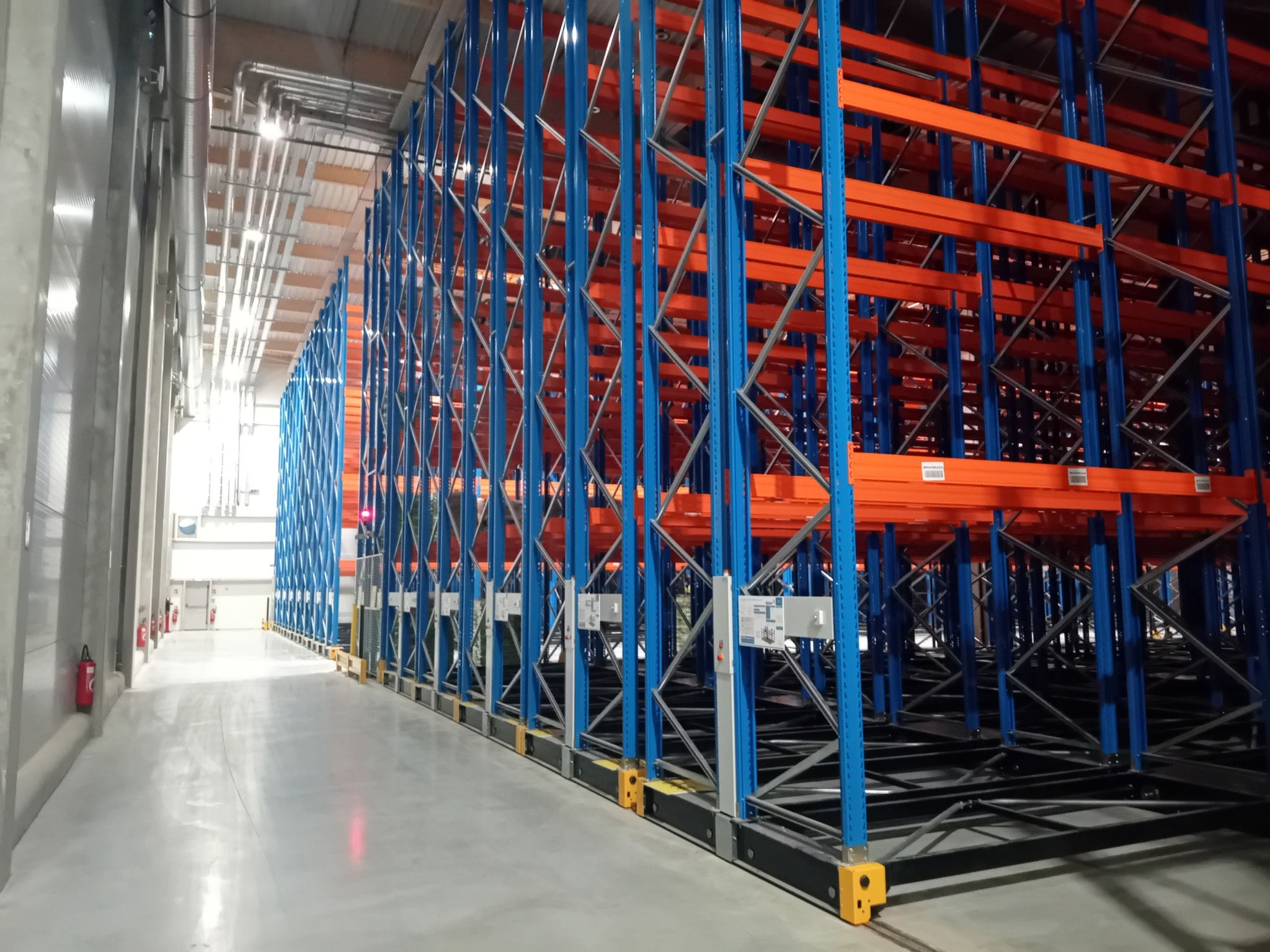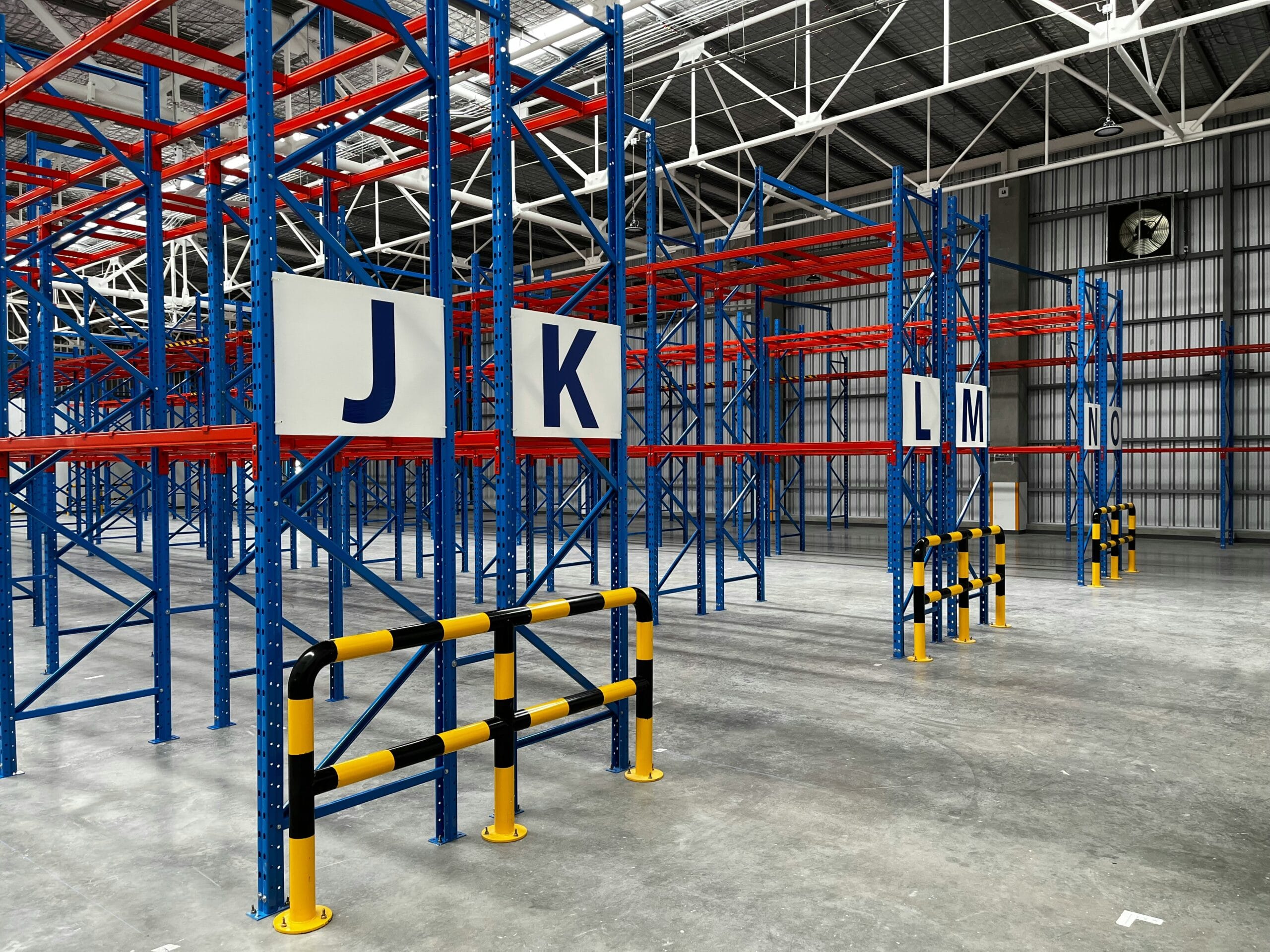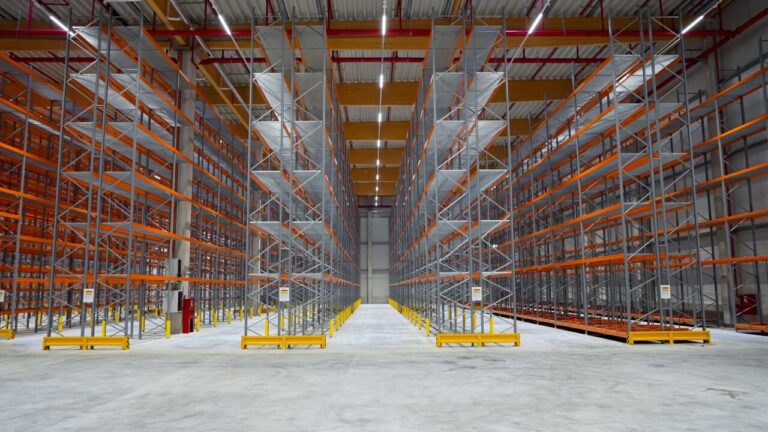Ultimate Guide to Pallet Racking Systems by Top Rack in Saudi Arabia
Introduction to Pallet Racking Systems
Pallet racking systems are essential components of modern warehouse management, facilitating the efficient storage of goods while maximizing available space. These systems comprise various configurations designed to meet specific storage requirements, providing an organized method for storing pallets and improving retrieval processes. With proper implementation, pallet racking can significantly enhance overall productivity and operational efficiency within a warehouse setting.
The importance of pallet racking systems cannot be overstated. In an environment where space is at a premium, these systems allow for vertical storage, thereby optimizing the use of height in a warehouse. This not only increases storage capacity but also aids in streamlining workflow, making it easier for personnel to locate and retrieve products quickly. Additionally, pallet racking systems contribute to better inventory management, reducing the likelihood of stock discrepancies and wastage.
In the market today, a variety of pallet racking options are available, each tailored to meet the needs of diverse industries. For instance, selective racking is widely used due to its ease of accessibility, making it an optimal choice for warehouses with a wide range of products. On the other hand, drive-in and drive-through racking systems are ideal for high-density storage, allowing for efficient storage in limited spaces. Further, cantilever racking systems are suitable for long and bulky items, offering stability and support for unconventional stock types.
Ultimately, the choice of pallet racking system will depend on factors such as inventory type, warehouse size, and operational flow. By understanding the various configurations and their applications across different industries, businesses can make informed decisions that align with their specific storage needs.
Types of Pallet Racking Systems
Pallet racking systems are crucial for optimizing warehouse space, enhancing efficiency in storage operations, and facilitating easy access to goods. At Top Rack in Saudi Arabia, various types of pallet racking systems are tailored to meet diverse storage needs, including selective racking, drive-in racking, and push-back racking, among others.
Selective racking is one of the most common systems used in warehouses. This system allows for direct access to each pallet, which can be loaded or retrieved easily. The flexibility and ease of use make selective racking suitable for operations with a wide variety of products. It enables optimal space utilization by allowing vertical stacking while maintaining access to individual pallets. This type is particularly beneficial in scenarios where inventory turnover is high.
Drive-in racking systems provide a more compact storage solution by allowing forklifts to enter the racking structure, which maximizes space. This system works on the last-in, first-out (LIFO) principle, making it ideal for operations that store large quantities of similar items. While drive-in racking is efficient for storage, it requires careful inventory management to ensure the oldest stock is used first. Here, warehouse storage becomes denser, reducing the need for aisles.
Another innovative option is the push-back racking system, which provides a balance between density and accessibility. In this system, pallets are loaded onto carts that roll back on inclined rails. This arrangement permits multiple pallets to be stored in a single lane while still allowing access to the front unit. Best applied in situations where product demand fluctuates, push-back racking is particularly effective for products that are frequently rotated.
Each of these pallet racking types presents unique advantages that cater to specific warehousing requirements, enabling businesses to optimize their storage capabilities efficiently.
Benefits of Using Pallet Racking Systems
Utilizing pallet racking systems within warehouses and distribution centers offers a plethora of benefits that significantly improve operational efficiency and organization. One of the most prominent advantages is improved space utilization. By utilizing vertical storage, pallet racking systems allow businesses to maximize their storage capacity, thereby making efficient use of available floor space. This enables companies to store more goods without the need for expanding their facilities, which can lead to substantial cost savings.
In addition to space efficiency, pallet racking systems also enhance accessibility. These systems facilitate easy access to stored items, making it simpler for workers to retrieve goods quickly and accurately. This ease of access can significantly reduce picking times and lead to increased productivity within the warehouse. Furthermore, an organized pallet racking arrangement allows for better inventory management, enabling companies to keep track of stock levels efficiently and ensuring that products are readily available when needed.
Safety is another crucial aspect that pallet racking systems improve. Properly designed and maintained racking systems minimize the risk of product damage and injuries associated with manual handling. By ensuring that goods are stored in a structured manner, businesses reduce the likelihood of accidents, creating a safer working environment for their employees. Moreover, most pallet racking systems are engineered to meet safety standards, providing an additional layer of reassurance.
Ultimately, the implementation of pallet racking systems can lead to greater operational efficiency. These systems streamline processes and enhance workflow, allowing staff to focus on core tasks rather than dealing with disorganization and inefficiencies. Overall, the combination of space optimization, improved accessibility, enhanced safety, and operational efficiency makes pallet racking systems an invaluable asset for any warehouse or distribution center.
Factors to Consider When Choosing a Pallet Racking System
When selecting a pallet racking system for a warehouse or distribution center, several critical factors must be evaluated to ensure that the chosen system aligns with operational needs. The first factor to consider is load capacity. Each pallet racking system has a specific load capacity, defined by the weight it can safely support. Businesses must calculate the weight of the items they intend to store and select a racking system that can accommodate this without risking structural integrity. Overloading can cause safety hazards and damage to products.
Another significant consideration is the warehouse layout. The design and dimensions of the available space will influence the type of pallet racking system that can be installed. Narrow aisles, high ceilings, and other spatial constraints may require specialized racking solutions, such as drive-in or selective pallet racks. Evaluating the layout enables businesses to maximize storage efficiency and navigate logistics effectively.
Product types also play a pivotal role in the selection process. Different products require varying levels of accessibility, handling methods, and storage conditions. For instance, perishables may necessitate temperature-controlled storage, thus requiring racks designed specifically for cold environments. Additionally, businesses dealing with items that have diverse dimensions or weights may benefit from adjustable racking systems.
Handling equipment is another essential aspect to consider. The compatibility of the racking system with existing forklifts or pallet jacks is crucial for seamless operation. Organizations should assess the dimensions of the handling equipment and its maneuverability within the racking system to prevent bottlenecks.
Finally, regulatory compliance must not be overlooked. It is imperative to ensure that the selected racking system meets local safety standards and industry regulations. This compliance not only guarantees worker safety but also protects the business from potential legal repercussions.
Installation and Maintenance of Pallet Racking Systems
Installing a pallet racking system requires careful planning and execution to ensure safety and functionality. Before beginning, it is essential to gather the necessary tools, which typically include a spirit level, wrenches, a forklift, and safety gear such as hard hats and gloves. Accurate measurements of the work area and a comprehensive layout plan will facilitate a smoother installation process. This attention to detail is critical, as even minor miscalculations can lead to significant safety hazards during operation.
Safety protocols should be strictly adhered to during installation. It is advisable to have a qualified professional oversee the process, particularly when handling heavy components. Team members must be trained in proper lifting techniques and be aware of their surroundings to avoid accidents. Furthermore, a thorough examination of the structure’s load-bearing capacity is imperative to ensure that the pallet racking system can support the designated loads, thereby preventing catastrophic failures.
Once the pallet racking system is installed, regular maintenance is key to its longevity and safety. Routine inspections should be conducted to identify any signs of wear or damage, such as bent beams or improperly secured components. It is recommended to implement a schedule for these checks, ideally on a monthly basis or after significant usage events. Regular maintenance also includes ensuring that the area around the racks is free from obstructions and that safety measures, such as proper signage and access paths, are always maintained.
Moreover, staff training on proper usage and load management is crucial. Employees should be educated on the maximum weight limits as each system varies, depending on its design and materials. Maintaining clear communication about any changes or concerns within the warehouse environment is essential for the continued safety of the pallet racking system. Through diligent installation and consistent maintenance practices, businesses can maximize the efficiency and durability of their pallet racking systems, ensuring optimal operation in their storage areas.
Customization Options by Top Rack
Pallet racking systems are essential in optimizing warehouse space and improving efficiency for businesses across various industries. Recognizing the diverse needs of different businesses, Top Rack offers an array of customization options to tailor these systems effectively. One of the key features is adjustable shelving heights, which allows organizations to adapt their racking to accommodate various pallet sizes and product dimensions. This flexibility ensures that the racking system can evolve alongside changing inventory levels and types, making it an invaluable asset over time.
Moreover, Top Rack provides options for different frame colors and finishes, aligning the racking systems with the company’s branding or aesthetic preferences. This customization can enhance the visual cohesion of the warehouse and contribute to a more organized and professional environment. The ability to personalize the look of pallet racking not only serves a functional purpose but can also improve employee morale and productivity by creating a pleasing workspace.
Beyond standard features, Top Rack recognizes that some businesses require specialized storage solutions. As a result, the company offers additional features such as safety barriers, specialized tray configurations, and integrated accessories for better merchandise management. These enhancements are critical for businesses that handle sensitive or hazardous materials, ensuring compliance with industry standards and safety regulations.
Furthermore, Top Rack collaborates closely with clients to understand their operational challenges and recommends the most suitable customization options. This consultation process helps businesses leverage their racking systems to the fullest, ultimately leading to increased efficiency and reduced operational costs. By investing in customized pallet racking solutions, companies can maximize their storage capabilities while simultaneously improving safety and accessibility within their facilities.
Case Studies: Successful Implementations in Saudi Arabia
In recent years, several businesses in Saudi Arabia have successfully implemented pallet racking systems from Top Rack, demonstrating not only the versatility of these systems but also their effectiveness in addressing various logistical challenges. One prominent case study involves a major retail chain in Riyadh that experienced significant inventory management issues due to the rapid growth of their product lines. Faced with limited storage space and inefficient access to their inventory, the company turned to Top Rack for a solution. The tailored pallet racking system provided an organized and systematic approach, maximizing vertical space and allowing for easier retrieval of products. As a result, the retailer reported a 30% increase in operational efficiency within the first three months of implementation.
Another notable example comes from a warehouse logistics company operating in Jeddah. This business initially struggled with disorganization and inefficiency in their shipping operations, leading to delayed order fulfillment and customer dissatisfaction. After assessing the logistics challenges, Top Rack proposed a robust selective pallet racking system designed to streamline the movement of goods. The implementation not only optimized the warehouse layout but also significantly reduced the time required for both picking and packing orders. Post-implementation, the company noted a substantial decrease in operational costs by approximately 25%, as well as enhanced customer satisfaction ratings.
Additive Case Studies further illustrate the benefits of pallet racking systems. A manufacturing firm in Dammam that faced space constraints due to raw material storage replaced traditional shelving units with a heavy-duty pallet racking system. This strategic move enabled them to store larger quantities of materials safely and efficiently, contributing to improved production timelines. These real-world scenarios underscore the adaptability of pallet racking systems to diverse business needs, proving their effectiveness in enhancing warehouse operations across Saudi Arabia.
Safety Standards and Compliance
Pallet racking systems play a crucial role in warehouse efficiency; however, their implementation and usage must adhere to strict safety standards and regulations, particularly in Saudi Arabia. Safety is of paramount importance in the design, construction, and operation of these systems to prevent accidents and ensure the wellbeing of warehouse personnel.
In Saudi Arabia, the primary safety standards for pallet racking systems are governed by the Saudi Standards, Metrology and Quality Organization (SASO). These standards mandate rigorous inspections and certifications that focus on various aspects of pallet racking. For instance, all components of a pallet racking system must meet the prescribed load ratings, which are determined based on the intended use and types of goods stored. It’s essential for warehouses to assess these load ratings periodically to ensure they remain compliant and that the systems are not subject to undue stress, which could lead to structural failure.
Additionally, documentation plays a significant role in maintaining compliance with safety standards. This involves keeping detailed records of inspections, audits, and maintenance activities. Warehouse operators are required to conduct periodic evaluations to identify any signs of wear and tear, corrosion, or damage to the racking systems. Beyond regular inspections, proper training for employees who operate or interact with pallet racking systems is also essential. This training should cover safe loading and unloading practices, awareness of weight limitations, and emergency procedures should an incident occur.
Adhering to the safety standards and compliance regulations in Saudi Arabia not only promotes a safer working environment but also minimizes organizational liabilities and enhances overall operational efficiency. By prioritizing safety, companies can ensure that their pallet racking systems serve their intended purpose without posing risks to workers or inventory.
Conclusion: The Future of Pallet Racking Systems in Saudi Arabia
As we have explored in this guide, pallet racking systems play a vital role in optimizing storage space and improving operational efficiency across various industries in Saudi Arabia. The significance of these systems cannot be overstated, as businesses increasingly seek to streamline their logistics and inventory management processes. The adoption of advanced pallet racking solutions not only enhances storage capacity but also ensures better accessibility to goods, thereby facilitating smoother operations.
The trends in pallet racking systems are evolving rapidly, influenced by factors such as technological advancements, sustainability concerns, and changing consumer demands. Companies like Top Rack are at the forefront of these innovations, developing cutting-edge racking solutions that incorporate automation and smart technology to meet the dynamic needs of the market. With a focus on efficiency and reliability, the future of pallet racking systems in Saudi Arabia looks promising.
Moreover, as businesses adapt to the ongoing economic changes, the demand for flexible and scalable racking systems will likely increase. This shift necessitates a focus on customization and adaptability in pallet racking designs, allowing companies to modify their warehouse layouts according to specific operational requirements. Embracing these trends can lead to significant improvements in productivity and resource management.
In conclusion, the landscape of pallet racking systems in Saudi Arabia is poised for growth, driven by innovation and the evolving needs of industries. Harnessing the expertise of suppliers like Top Rack will enable businesses to navigate these changes effectively, ensuring they remain competitive in the ever-changing marketplace. The future of pallet racking systems is not only about storage solutions; it is about fostering an environment that supports operational excellence and sustainable growth.




